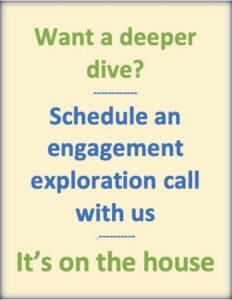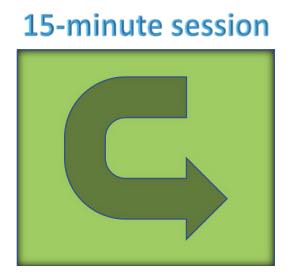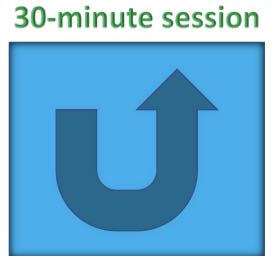The Human View™ Blog

The 2 HRA Questions that Changed Our Outreach Strategy
Back in the late 2000s, I was an executive with one of the first wellness companies in the country to bring in medical and pharmaceutical claims data. Having that data on both our program participants and non-participants helped us gain perspectives that were uncommon in the well-being industry at that time. In particular, we wanted to stratify claims costs by both HRA (Health Risk Assessment) and Biometric Screening data - as well as by our Health Score, which combined 5 lifestyle and 8 biometric risk factors into a simple 0 - 100 scale.

Much of what we found was, more or less, what we expected to find. But not everything! What we discovered from two of our HRA questions surprised us: not so much the findings themselves, but the scale of the findings was eye-opening. Because of these insights, we re-oriented our outreach and coaching engagement strategy to focus more attention on these risks:
The number of meds people were taking, and
How satisfied they reported they were with their lives.

The power of medication quantity data
For medications, we simply asked how many meds people were taking, from "none" to "5 or more." While we expected claims costs to increase as medication numbers rose from zero to four, something remarkable happened at the "5 or more" threshold.
On average, members taking 5 or more medications had healthcare costs approximately 5x higher than those taking 4 medications.
This wasn't just a minor statistical blip – it held true regardless of which medications were being taken, and for which conditions. Like many of our peers – before this – we had tended to come at risk and cost management from a condition-specific standpoint.
Armed with this new awareness, we revised our protocols to be both condition-specific and medication-quantity-specific. This also expanded our views of co-morbidities, faster (or, perhaps, more clearly) than just starting from say, looking at diabetics and then seeing what other conditions they might have. Our newly updated process began to make a significant difference in both health outcomes and cost management.

An overlooked cost driver - life satisfaction
The second question that caused us to refocus our approach was equally simple: "How satisfied are you with your life right now?" Respondents could choose from "Very Satisfied" to "Very Dissatisfied" on a five-point scale. Once again, we discovered a dramatic pattern. While claims costs increased gradually from "Very Satisfied" through "Dissatisfied," those who reported being "Very Dissatisfied" had – again – claims costs that were more than 5x higher than those who were merely "Dissatisfied."
This finding highlighted the profound connection between emotional well-being and physical health, reinforcing the importance of addressing both in our wellness programs.
Transforming data into action
These insights fundamentally transformed our outreach strategy. Rather than just condition-specific groups, we added resources to target those two key groups:
Members who were taking 5 or more medications
Members who reported they were "Very Dissatisfied" with their lives
We intensified our outreach efforts to these groups through both phone calls and emails, recognizing that these employees (and, for employers who also included spouses) represented a broader opportunity to make a meaningful impact on both health outcomes and healthcare costs.

For those taking multiple medications, our nurses, dietitians and coaches worked closely with members to:
Review medication regimens
Identify potential interactions
Ensure appropriate usage
Coordinate with healthcare providers
Address other underlying lifestyle conditions and behavioral tendencies
For those reporting low life satisfaction, we:
Provided emotional support and resources
Offered health improvement strategies
Connected members with mental health resources
Developed personalized coping strategies
Addressed work-life balance issues
The results spoke volumes
The impact of this targeted approach was significant. Members who engaged with our programs showed measurable improvements in both areas:

Many participants in the high-medication group worked with their healthcare providers to optimize their medication regimens and, in some cases, health improvements meant that people could get off of some of their meds.
Those who engaged in our life satisfaction initiatives reported improved emotional well-being scores in follow-up assessments, which translated into productivity improvements and better teamwork.
Most importantly, both groups showed statistically significant claims costs reductions in the following years.
This experience taught us several valuable lessons:
Sometimes the most powerful insights come from the simplest questions
Data patterns can reveal critical intervention points
Targeting outreach using a wider "lens" could build upon the known effectiveness of narrower, more traditional condition- or lifestyle-specific risk-factor-based outreach
Addressing both physical and emotional health is crucial for overall wellness
Early intervention with high-risk groups can lead to significant cost savings
The last word
The industry as a whole has continued to evolve. And, of course, the rise of mental health point solutions is a testament to the powerful effect that human emotions have on our behaviors, and on health plan costs. Behind every data point is a person, and by identifying and reaching out to those most in need from any one of 3 orientations - lifestyle, clinical, and emotional/mental, we can make a real difference in people's lives and help employers manage their health plan costs more effectively.
~ Mark Head
© 2024. All Rights Reserved.

Click the green button or the blue button (below) to visit our scheduling pages.




Mark Head
President
With 4 decades of combined experience in employee benefits consulting, wellness and health management, Head brings a unique combination of dynamic perspectives into a clear vision of where the future of health care is moving - and it's moving towards deeper human connection, awareness, and engagement...
Follow Us On
© 2015 - 2025, MDH Consulting, LLC. All Rights Reserved.

